Thingiverse
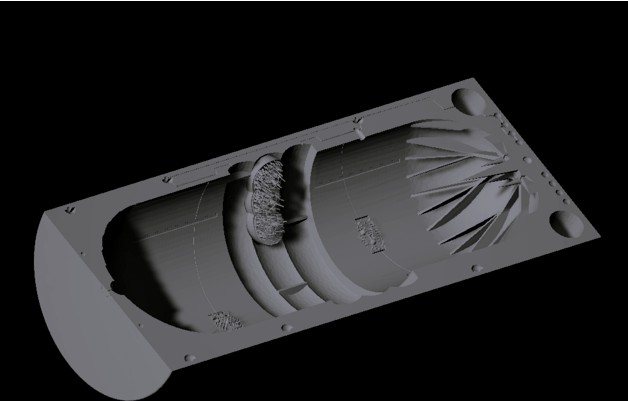
Rama scaled one in 500 thousand by tato_713
by Thingiverse
Last crawled date: 3 years, 4 months ago
This is the model of the colossal centrifugal alien spaceship from the Arthur C. Clarke book Rendezvous with Rama, one of the most popular hard science fiction books. I made this based on what I read from the first book on the serie and this image, apparently from the cover art of a video game, but not from any information from its sequels. I've read only an Spanish copy, so some details may be wrong because of translation issues and adaptations.
Before printing anything, please, read this paragraph. I made this in various parts, depending on the scale, so they can be printed separately, and then glued. Cities must be printed separately and they will fit very loose, so they must be fixed with hot glue, or something alike. The scales available in this post are:
One in 500 thousand. This is the smallest scale, about 10cm long. It can be made divided in north-center-south parts, or into longitudinal halves. The cities cannot be made in this scale.
One in 200 thousand. a 25cm long model. It can be made divided in north-center-south parts, or into longitudinal halves. Cities are extremely small and I am not entirely sure they can be made even using resin (SLA) printers, I don't have one to test them.
One in eighty thousand. It can be made divided in north-center-south parts, or into 12 smaller parts. This is a big model, it must be made in big printers (bigger than 25x25x20cm), or in several parts (showed in the image below). Cities may be printable even in FDM with a good configuration.
Order of parts
The file's names explained: name_1_x_10_y.stl is 1 : x * 10y. So _1_6_10_7 is 1:600000000 or one in 60 million.The accuracy of the model
The model was made taken these features as literal from the book:
The spaceship was a cylinder 50km long and 20km in diameter, although it can be expected aliens having different metrics, and these measures being actually rounded values instead of exact ones.
Everything has a triple redundancy architecture, linearly or 120 degree distribution.
The inner surface shape: concave in the north part (by its rotation), with three stairs; cylindrical plains divided by a sea: north hemisphere surface 8km from the rotational axis, and 50m above the sea level; and the south hemisphere 500m above the sea; the south pole has "horns", one bigger in the center
There are 6 "towns" on the plains:
London: closermost to a stair, a collection of tubes. It's located 15km East of Paris, which is equivalent to 120° counter clockwise.
Paris: in the middle way from the stairs to the sea. It looks like an storage section with buildings.
Rome. It's located 15km West to Paris, which is equivalent to 120° clockwise.
Moscow
Beijing
Tokio
A "city" in the middle of the sea, nicknamed "New York" after its shape. It's divided in three equally designed sections and it looks more alike a huge fabric than a city. It is located opposed to London (180°).
Some features were deliberately made different from the description in the book:
London, Paris, Rome and Moscow belong to the northern hemisphere. However, in order to keep the symmetry, I placed Moscow on the south hemisphere.
The towns were connected by "roads", but these roads are not explicit to be up or below the surrounding relief.
There are 6 trenches 100m wide that run axially on both hemispheres. Those trenches resulted to be giant lanterns. I made them wider so they are more recognisable.
I also made up a lot of details that are not described on the book:
The entrance is vaguely described, I played with its shape.
Only New York, Paris and London are described in the first book, I made the rest as cartoonish mockups of the Earther counterparts.
The cross-section features were taken from the videogame artwork; in the book the characters didn't dig below the habitable inner surface.
I spend part of my time making these models, letting them available and free for everyone. If you want to support my work, you can contribute with me here:
Other astronomical objects
Object
Scale [1:x]
K = 103 (thousand)M = 106 (million)G = 109 (billion)
Image
Inner planets and moons
Mercury
60M,
120M
Venus
60M,
120M,
250M
Earth
60M,
120M,
250M
Luna
20M,
60M
Mars
60M,
120M
Phobos and Deimos
200K,
500K
Artificial
Salyut 7
40, 48, 80, 160
Near Earth Asteroids
Moshup and Squannit
8K,
20K,
40K
Ra-Shalom
20K,
40K
Castalia
8K,
20K,
40K
Bacchus
8K,
20K
Bennu
3K,
8K
Ryugu
8K,
20K
Geographos
40K,
80K
Phaethon
40K,
80K
Itokawa
3K,
8K
Eros
200K,
500K
Mithra
20K,
40K
Golevka
8K
Toutatis
40K,
80K
Main Asteroid Belt
Gaspra
200K
Annefrank
40K,
80K
Braille
20K,
40K
Vesta
4M,
10M
Šteins
40K,
80K,
200K
Iris
2M,
4M
Hebe
1M,
2M,
4M
Lutetia
1M,
2M
Julia
1M,
2M,
4M
Mathilde
500K,
1M
Juno
2M,
4M
Ceres
4M,
10M
Pallas
4M,
10M
Kleopatra
2M,
4M
Ida
500K,
1M
Psyche
2M,
4M
Interamnia
2M,
4M
Hygiea
2M,
4M,
10M
Antiope
1M,
2M
Jovian System
Jupiter
1G
Amalthea
2M,
4M
Thebe
1M,
2M
Io
20M,
60M
Europa
20M,
60M
Ganymede
60M,
120M
Callisto
60M,
120M
Saturn System
Saturn
500M,
1G
Pan, Daphnis and Atlas
80K,
200K,
500K,
1M
Prometheus and Pandora
1M,
2M
Janus and Epimetheus
2M,
4M
Mimas
2M,
4M,
10M
Methone, Anthe and Pallene
40K,
80K
Enceladus
4M,
10M
Tethys
10M
Telesto and Calypso
200K,
500K
Dione
10M
Helene
500K,
1M
Rhea
10M,
20M
Titan
60M,
120M
Hyperion
2M,
4M
Iapetus
10M,
20M
Phoebe
2M,
4M
Uranian System
Uranus
250M,
500M,
1G
Puck
1M,
2M,
4M
Miranda
4M,
10M
Ariel
10M
Umbriel
10M
Titania
10M,
20M
Oberon
10M,
20M
Neptunian System
Neptune
250M,
500M,
1G
Larissa
2M,
4M
Proteus
2M,
4M,
10M
Triton
20M
Comets
Tempel 1
40K,
80K,
200K
Wild 2
40K,
80K
Churyumov-Gerasimenko
40K,
80K
Hartley 2
20K,
40K,
80K
Borrelly
40K,
80K,
200K
Halley
80K,
200K
Centaurs and TNOs
Hidalgo
500K, 1M
Chariklo
2M,
4M
Pluto and Charon
10M,
20M
Styx, Nix, Kerberos and Hydra
500K,
1M
Haumea, Namaka and Hiʻiaka
10M,
20M
Arrokoth
200K,
500K,
1M
Largest TNOs and their moons
10M,
20M
Extrasolar
Exoplanets
120M,
250M,
500M
Nearest white dwarfs
120M,
250M
HD 189733 b
1G
Pulsars
200K,
500K
Cygnus X-1 accretion disk
10M,
20M
Sky maps
Heliosphere
7.5*1013, 1.5*1014
Constellations
-
CMBR
2*1028
Ancient
Earth (540 Mya to 20 Mya)
60M,
120M,
250M
Luna (4 Gya)
20M,
60M
Hypothetical and simulations
Planet Nine
250M,
500M
Cube planet
60M,
120M,
250M
Science Fiction
Ghroth
4M,
10M
Arda
60M,
120M
B612
10, 20, 32, 40
Mesklin
500M,
1G
Arrakis
60M,
120M
Borg cube
20K,
40K
Pern
60M,
120M
Europa Monolith
200K,
500K
Leonora Christine
500, 600, 1K, 3K
Rama
80K, 200K, 500K
Death Star
1M, 2M
Starkiller Base
4M,
10M
Nirn, Secunda and Masser
20M,
60M,
120M
Independence Day mothership
2M,
4M,
10M
Arrival heptapod spaceship
1K,
3K,
8K
Halo Array
4M,
10M, 20M, 60M
Gem Homeworld
120M, 250M, 500M
Misc
Mars (1962 reconstruction)
60M,
120M
Flat Earth
250M
Expanding Earth
60M, 120M
Spaceship of Ezekiel
80, 160
Before printing anything, please, read this paragraph. I made this in various parts, depending on the scale, so they can be printed separately, and then glued. Cities must be printed separately and they will fit very loose, so they must be fixed with hot glue, or something alike. The scales available in this post are:
One in 500 thousand. This is the smallest scale, about 10cm long. It can be made divided in north-center-south parts, or into longitudinal halves. The cities cannot be made in this scale.
One in 200 thousand. a 25cm long model. It can be made divided in north-center-south parts, or into longitudinal halves. Cities are extremely small and I am not entirely sure they can be made even using resin (SLA) printers, I don't have one to test them.
One in eighty thousand. It can be made divided in north-center-south parts, or into 12 smaller parts. This is a big model, it must be made in big printers (bigger than 25x25x20cm), or in several parts (showed in the image below). Cities may be printable even in FDM with a good configuration.
Order of parts
The file's names explained: name_1_x_10_y.stl is 1 : x * 10y. So _1_6_10_7 is 1:600000000 or one in 60 million.The accuracy of the model
The model was made taken these features as literal from the book:
The spaceship was a cylinder 50km long and 20km in diameter, although it can be expected aliens having different metrics, and these measures being actually rounded values instead of exact ones.
Everything has a triple redundancy architecture, linearly or 120 degree distribution.
The inner surface shape: concave in the north part (by its rotation), with three stairs; cylindrical plains divided by a sea: north hemisphere surface 8km from the rotational axis, and 50m above the sea level; and the south hemisphere 500m above the sea; the south pole has "horns", one bigger in the center
There are 6 "towns" on the plains:
London: closermost to a stair, a collection of tubes. It's located 15km East of Paris, which is equivalent to 120° counter clockwise.
Paris: in the middle way from the stairs to the sea. It looks like an storage section with buildings.
Rome. It's located 15km West to Paris, which is equivalent to 120° clockwise.
Moscow
Beijing
Tokio
A "city" in the middle of the sea, nicknamed "New York" after its shape. It's divided in three equally designed sections and it looks more alike a huge fabric than a city. It is located opposed to London (180°).
Some features were deliberately made different from the description in the book:
London, Paris, Rome and Moscow belong to the northern hemisphere. However, in order to keep the symmetry, I placed Moscow on the south hemisphere.
The towns were connected by "roads", but these roads are not explicit to be up or below the surrounding relief.
There are 6 trenches 100m wide that run axially on both hemispheres. Those trenches resulted to be giant lanterns. I made them wider so they are more recognisable.
I also made up a lot of details that are not described on the book:
The entrance is vaguely described, I played with its shape.
Only New York, Paris and London are described in the first book, I made the rest as cartoonish mockups of the Earther counterparts.
The cross-section features were taken from the videogame artwork; in the book the characters didn't dig below the habitable inner surface.
I spend part of my time making these models, letting them available and free for everyone. If you want to support my work, you can contribute with me here:
Other astronomical objects
Object
Scale [1:x]
K = 103 (thousand)M = 106 (million)G = 109 (billion)
Image
Inner planets and moons
Mercury
60M,
120M
Venus
60M,
120M,
250M
Earth
60M,
120M,
250M
Luna
20M,
60M
Mars
60M,
120M
Phobos and Deimos
200K,
500K
Artificial
Salyut 7
40, 48, 80, 160
Near Earth Asteroids
Moshup and Squannit
8K,
20K,
40K
Ra-Shalom
20K,
40K
Castalia
8K,
20K,
40K
Bacchus
8K,
20K
Bennu
3K,
8K
Ryugu
8K,
20K
Geographos
40K,
80K
Phaethon
40K,
80K
Itokawa
3K,
8K
Eros
200K,
500K
Mithra
20K,
40K
Golevka
8K
Toutatis
40K,
80K
Main Asteroid Belt
Gaspra
200K
Annefrank
40K,
80K
Braille
20K,
40K
Vesta
4M,
10M
Šteins
40K,
80K,
200K
Iris
2M,
4M
Hebe
1M,
2M,
4M
Lutetia
1M,
2M
Julia
1M,
2M,
4M
Mathilde
500K,
1M
Juno
2M,
4M
Ceres
4M,
10M
Pallas
4M,
10M
Kleopatra
2M,
4M
Ida
500K,
1M
Psyche
2M,
4M
Interamnia
2M,
4M
Hygiea
2M,
4M,
10M
Antiope
1M,
2M
Jovian System
Jupiter
1G
Amalthea
2M,
4M
Thebe
1M,
2M
Io
20M,
60M
Europa
20M,
60M
Ganymede
60M,
120M
Callisto
60M,
120M
Saturn System
Saturn
500M,
1G
Pan, Daphnis and Atlas
80K,
200K,
500K,
1M
Prometheus and Pandora
1M,
2M
Janus and Epimetheus
2M,
4M
Mimas
2M,
4M,
10M
Methone, Anthe and Pallene
40K,
80K
Enceladus
4M,
10M
Tethys
10M
Telesto and Calypso
200K,
500K
Dione
10M
Helene
500K,
1M
Rhea
10M,
20M
Titan
60M,
120M
Hyperion
2M,
4M
Iapetus
10M,
20M
Phoebe
2M,
4M
Uranian System
Uranus
250M,
500M,
1G
Puck
1M,
2M,
4M
Miranda
4M,
10M
Ariel
10M
Umbriel
10M
Titania
10M,
20M
Oberon
10M,
20M
Neptunian System
Neptune
250M,
500M,
1G
Larissa
2M,
4M
Proteus
2M,
4M,
10M
Triton
20M
Comets
Tempel 1
40K,
80K,
200K
Wild 2
40K,
80K
Churyumov-Gerasimenko
40K,
80K
Hartley 2
20K,
40K,
80K
Borrelly
40K,
80K,
200K
Halley
80K,
200K
Centaurs and TNOs
Hidalgo
500K, 1M
Chariklo
2M,
4M
Pluto and Charon
10M,
20M
Styx, Nix, Kerberos and Hydra
500K,
1M
Haumea, Namaka and Hiʻiaka
10M,
20M
Arrokoth
200K,
500K,
1M
Largest TNOs and their moons
10M,
20M
Extrasolar
Exoplanets
120M,
250M,
500M
Nearest white dwarfs
120M,
250M
HD 189733 b
1G
Pulsars
200K,
500K
Cygnus X-1 accretion disk
10M,
20M
Sky maps
Heliosphere
7.5*1013, 1.5*1014
Constellations
-
CMBR
2*1028
Ancient
Earth (540 Mya to 20 Mya)
60M,
120M,
250M
Luna (4 Gya)
20M,
60M
Hypothetical and simulations
Planet Nine
250M,
500M
Cube planet
60M,
120M,
250M
Science Fiction
Ghroth
4M,
10M
Arda
60M,
120M
B612
10, 20, 32, 40
Mesklin
500M,
1G
Arrakis
60M,
120M
Borg cube
20K,
40K
Pern
60M,
120M
Europa Monolith
200K,
500K
Leonora Christine
500, 600, 1K, 3K
Rama
80K, 200K, 500K
Death Star
1M, 2M
Starkiller Base
4M,
10M
Nirn, Secunda and Masser
20M,
60M,
120M
Independence Day mothership
2M,
4M,
10M
Arrival heptapod spaceship
1K,
3K,
8K
Halo Array
4M,
10M, 20M, 60M
Gem Homeworld
120M, 250M, 500M
Misc
Mars (1962 reconstruction)
60M,
120M
Flat Earth
250M
Expanding Earth
60M, 120M
Spaceship of Ezekiel
80, 160
Similar models
thingiverse
free

Wheel of Time Earth scaled one in sixty million by tato_713
...
flat earth
250m
expanding earth
60m, 120m
spaceship of ezekiel
80, 160
thingiverse
free

Visitors mothership scaled one in forty by tato_713
...
flat earth
250m
expanding earth
60m, 120m
spaceship of ezekiel
80, 160
thingiverse
free

4660 Nereus scaled one in eight thousand by tato_713
...
flat earth
250m
expanding earth
60m, 120m
spaceship of ezekiel
80, 160
thingiverse
free
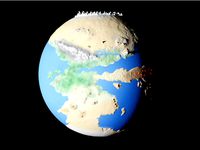
Eternia scaled one in sixty million by tato_713
...
flat earth
250m
expanding earth
60m, 120m
spaceship of ezekiel
80, 160
thingiverse
free

Citadel of Ricks scaled one in 200 thousand by tato_713
...it in the same scale with a city with similar population density, in which the landscapes of the citadel...
thingiverse
free

Gaijin flowership scaled one in three thousand by tato_713
...
flat earth
250m
expanding earth
60m, 120m
spaceship of ezekiel
80, 160
thingiverse
free
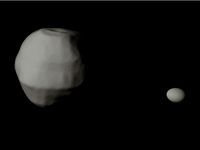
65803 Didymos and Dimorphos scaled one in eight thousand by tato_713
...
flat earth
250m
expanding earth
60m, 120m
spaceship of ezekiel
80, 160
thingiverse
free

HD 189733 A b heat map scaled one in one billion by tato_713
...reconstruction)
60m,
120m
flat earth
250m
expanding earth
60m, 120m
thingiverse
free

M87* photon ring scaled one in 1.5*10^15 by tato_713
...contrast, super masive black holes can have a density similar or even lower than water. this is because the...
thingiverse
free

Spaceship of Ezekiel scaled one in 160 by tato_713
...
flat earth
250m
expanding earth
60m, 120m
spaceship of ezekiel
80, 160
Tato
3ddd
$1

Tato 01, IL Loft
... om
стул tato 01 от итальянской компании il loft, размер: 700x500x840
источник: www.illoft.com
материалы в комплекте.
turbosquid
$8

TATO JIL TABLE LAMP
...l table lamp for download as jpg, 3ds, max, dxf, obj, and fbx on turbosquid: 3d models for games, architecture, videos. (1489908)
design_connected
$11

Jil Table Light
...jil table light designconnected tato italia jil table light computer generated 3d model. designed...
design_connected
$11

Biba Table Lamp
...biba table lamp designconnected tato italia biba table lamp computer generated 3d model. designed...
3d_sky
free

Tato 01, IL Loft
...1, il loft
3dsky
chair of the italian company of tato 01 il loft, size: 700x500x840 source: www.illoft.com
materials in the kit.
3dbaza
$3

Tato PIEDI REGOLABILI TABLE BY IGNAZIO GARDELLA (123600)
...tato piedi regolabili table by ignazio gardella (123600)
3dbaza
tato piedi regolabili by ignazio gardella table 3d model
thingiverse
free

Tato Cube 3 / Cube3 Extruder Original Hobbed & 608 Bearing by mdorignac
...ruder original hobbed & 608 bearing by mdorignac
thingiverse
tato cube 3 / cube3 extruder original hobbed & 608 bearing
thingiverse
free

Couch Phone-tato by mmarcoux98
... ability.
finally do let me know of other compatible phones and phones you would like a couch phone-tato for.
thanks and enjoy!
3dbaza
$3

Wallie Chandelier by Lorenza Bozzoli for Tato (137297)
... 928<br>xform: no<br>box trick: no<br>model parts: 2<br>render: v-ray<br>formats: 3ds max 2014, obj
3dbaza
$3

Anita Table Lamp by Lorenza Bozzoli for Tato (137153)
... 960<br>xform: no<br>box trick: no<br>model parts: 2<br>render: v-ray<br>formats: 3ds max 2014, obj
713
design_connected
$11

713
...713
designconnected
cassina 713 coffee tables computer generated 3d model. designed by theodore waddell.
turbosquid
free

glider PH-713
... available on turbo squid, the world's leading provider of digital 3d models for visualization, films, television, and games.
3ddd
free

Italamp fashion lighting 713
...13
3ddd
italamp , fashion
люстра - italamp fashion lighting 713
размеры - d60 см, h29 см
3ddd
$1

N-Light 713-03-52AC Antique Copper/713-03-12CH Polished Nickel
...ch polished nickel
3ddd
подвес
подвес в корабельном стиле
713-03-52ac antique copper n-light
713-03-12ch polished nickel n-light
3ddd
$1

tisserant as-713
...ch's , tisserant
3ds max 2014
3ds max 2011
fbx
obj
textures
materials
real size
3d_export
$60

Architecture 713 3D Model
...lege campus max street landscape commercial building medical hospital offices
architecture 713 3d model lotusmodel 49098 3dexport
3d_export
$150

3d building 713 3D Model
...erior vray sitting accesorie apartment home visualization sofa couch table chair
3d building 713 3d model kanhtart 46553 3dexport
3ddd
$1

NLight 713-03-52AC
...light , подвес
потолочная чаша - с шарниром.
внизу плафона - матовое рассеивающее стекло
3d_export
$50

3D Home 713 3D Model
... chair furniture texture table lamp apartment rug carpet restaurant hotel sitting
3d home 713 3d model richard3015 46995 3dexport
humster3d
$40

3D model of Acer Iconia Tab 7 (A1-713)
...d 3d model of acer iconia tab 7 (a1-713) in various file formats. all our 3d models were created maximally close to the original.
Rama
3ddd
$1

Kristalia Rama
... rama
http://www.stylepark.com/ru/kristalia/rama-wood?ref=show_manufacturer_products
3ddd
$1

Blochnaya rama
...blochnaya rama
3ddd
тренажер , спорт конкурс
blochnaya rama
design_connected
$16

Rama Slide Base
...rama slide base
designconnected
kristalia rama slide base computer generated 3d model. designed by ramos & bassols.
design_connected
$16

Rama Wood Base
...rama wood base
designconnected
kristalia rama wood base computer generated 3d model. designed by ramos & bassols.
design_connected
$13

Rama 4 Legs
...rama 4 legs
designconnected
kristalia rama 4 legs computer generated 3d model. designed by ramos & bassols.
turbosquid
$24

Rama Buttery Butter Spread 400g
... 3d model rama buttery butter spread 400g for download as max on turbosquid: 3d models for games, architecture, videos. (1346448)
turbosquid
$10

1417 Rama Bar - Isa Internationale
...417 rama bar - isa internationale for download as max and fbx on turbosquid: 3d models for games, architecture, videos. (1560759)
3d_export
$20

ramparibvar rama family
...t is very famous gods family called "ramparivar". we can use it as a jewelry pendant, earring, rings, or other purpose.
3d_ocean
$35

Fern Connection 1
...10 hd model variations, from 60,000 to 250,000 polygons picture-rama preview : http://www.iconrange.com/3d/fern/ description...
3d_sky
free

Rama
...rama
3dsky
rama
rama
Thousand
turbosquid
$28

Thousand Sunny
... available on turbo squid, the world's leading provider of digital 3d models for visualization, films, television, and games.
turbosquid
free

Thousand Dollar
... available on turbo squid, the world's leading provider of digital 3d models for visualization, films, television, and games.
3d_export
$65

Thousands of troops
...thousands of troops
3dexport
simple rendering of the scene file
turbosquid
$5

Voxelart Thousand Sunny
...lty free 3d model voxelart thousand sunny for download as obj on turbosquid: 3d models for games, architecture, videos. (1262032)
3d_export
$5

umbrella of a thousand probabilities
... of a thousand probabilities
3dexport
model of the game character of the protagonist of the anime "avatar of the king"
3d_export
$18

9 thousand years of flat peach tree
...at peach tree
3dexport
executed in 3d max 2014<br>all textures and materials needed for the rendering found in the archive
turbosquid
$12

ronze Tripod furnace incense round tripod thousand Tripod Sculpture Artifacts
...pod thousand tripod sculpture artifacts for download as max on turbosquid: 3d models for games, architecture, videos. (1713294)
3d_export
$199

thousand oaks city california 40km
...t;1. suitable for games, games, education, architecture etc.<br>2. mainly used for town and urban planning, real estate etc
3ddd
$1

Fantasia Lamp
...or waiting rooms. fantasia - the lamp of a thousand lights and a thousand...
3d_export
$19

beautiful girl
...girl in modern clothes. detailed grid - about 100 thousand ...
500
turbosquid
$50

500
...500
turbosquid
royalty free 3d model 500 for download as on turbosquid: 3d models for games, architecture, videos. (1578463)
3d_export
$5
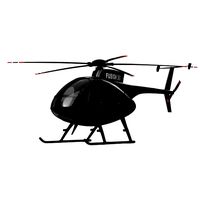
md 500
...md 500
3dexport
the md helicopters md 500 series is an american family of light utility civilian and military.
3d_export
$17

Helicopters MD 500
...helicopters md 500
3dexport
helicopters md 500
3ddd
$1

dreambox dm-500
...dreambox dm-500
3ddd
dreambox dm-500
3ddd
$1
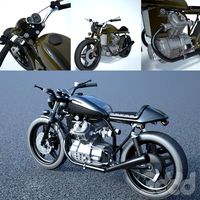
CX-500 Custom
...cx-500 custom
3ddd
honda , мотоцикл
cx-500 custom
3d_export
$8

tnk 500
...tnk 500
3dexport
office chair
turbosquid
$35

500 euro
...alty free 3d model 500 euro for download as max, obj, and stl on turbosquid: 3d models for games, architecture, videos. (1223365)
turbosquid
$20

FIAT 500
...yalty free 3d model fiat 500 for download as ma, obj, and fbx on turbosquid: 3d models for games, architecture, videos. (1490818)
3ddd
$1

500 Fifth Avenue
...500 fifth avenue
3ddd
статуэтка
статуэтка 500 fifth avenue, new york
turbosquid
$59

MSP 500
... available on turbo squid, the world's leading provider of digital 3d models for visualization, films, television, and games.
Scaled
turbosquid
$20
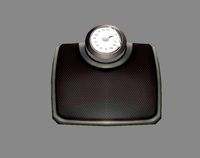
Weight scale or Bathroom Scale
...ght scale or bathroom scale for download as max, fbx, and obj on turbosquid: 3d models for games, architecture, videos. (1664576)
turbosquid
$19

Scale
...e
turbosquid
royalty free 3d model scale for download as fbx on turbosquid: 3d models for games, architecture, videos. (1411722)
turbosquid
$5

Scales
...s
turbosquid
royalty free 3d model scales for download as ma on turbosquid: 3d models for games, architecture, videos. (1393439)
turbosquid
$40

Scale
... available on turbo squid, the world's leading provider of digital 3d models for visualization, films, television, and games.
turbosquid
$17

Scales
... available on turbo squid, the world's leading provider of digital 3d models for visualization, films, television, and games.
turbosquid
$12

Scale
... available on turbo squid, the world's leading provider of digital 3d models for visualization, films, television, and games.
turbosquid
free

Scale
... available on turbo squid, the world's leading provider of digital 3d models for visualization, films, television, and games.
3d_export
$7

of scales
...s have a flat point of support. the samples are rendered in the standard cinema 4d renderer. enjoy your use and creative success.
3d_export
$5
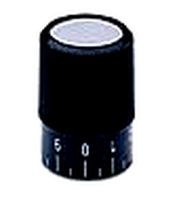
scale knob
...scale knob
3dexport
scale knob
3d_export
$20

cartoon weight scale or bathroom scale
...cartoon weight scale or bathroom scale
3dexport
texture size:512px number of texture:1 texture format: png
One
turbosquid
$2
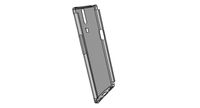
one plus one
... available on turbo squid, the world's leading provider of digital 3d models for visualization, films, television, and games.
3ddd
$1

One
...one
3ddd
стул
офисный стул one
3ddd
free

one
...
palazetti one ,http://palazzetti.ca/index.php/component/virtuemart/seating/armchairs-lounges/one-chair-detail?itemid=0
turbosquid
$35

One A
... available on turbo squid, the world's leading provider of digital 3d models for visualization, films, television, and games.
turbosquid
free
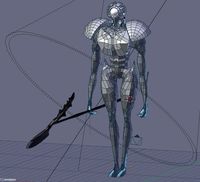
One
... available on turbo squid, the world's leading provider of digital 3d models for visualization, films, television, and games.
3ddd
$1

Стул One
...стул one
3ddd
one , magis
кресло magis s.p.a , one
3ddd
$1
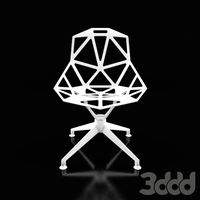
Стул One
...стул one
3ddd
one , magis
кресло one chair (4star), magis s.p.a.
3d_export
$20

xbox one
...xbox one
3dexport
xbox one
3ddd
$1

xbox one
... консоль , джойстик
xbox one + kinect + gamepad
3ddd
free
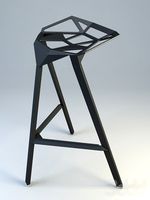
One
...nstantin grcic
артикул ct-284 (cosmorelax.ru)
размер l36xw41xh82.5, sh 77cm
цвет черный, красный
материал алюминий
вес 2,5 кг
